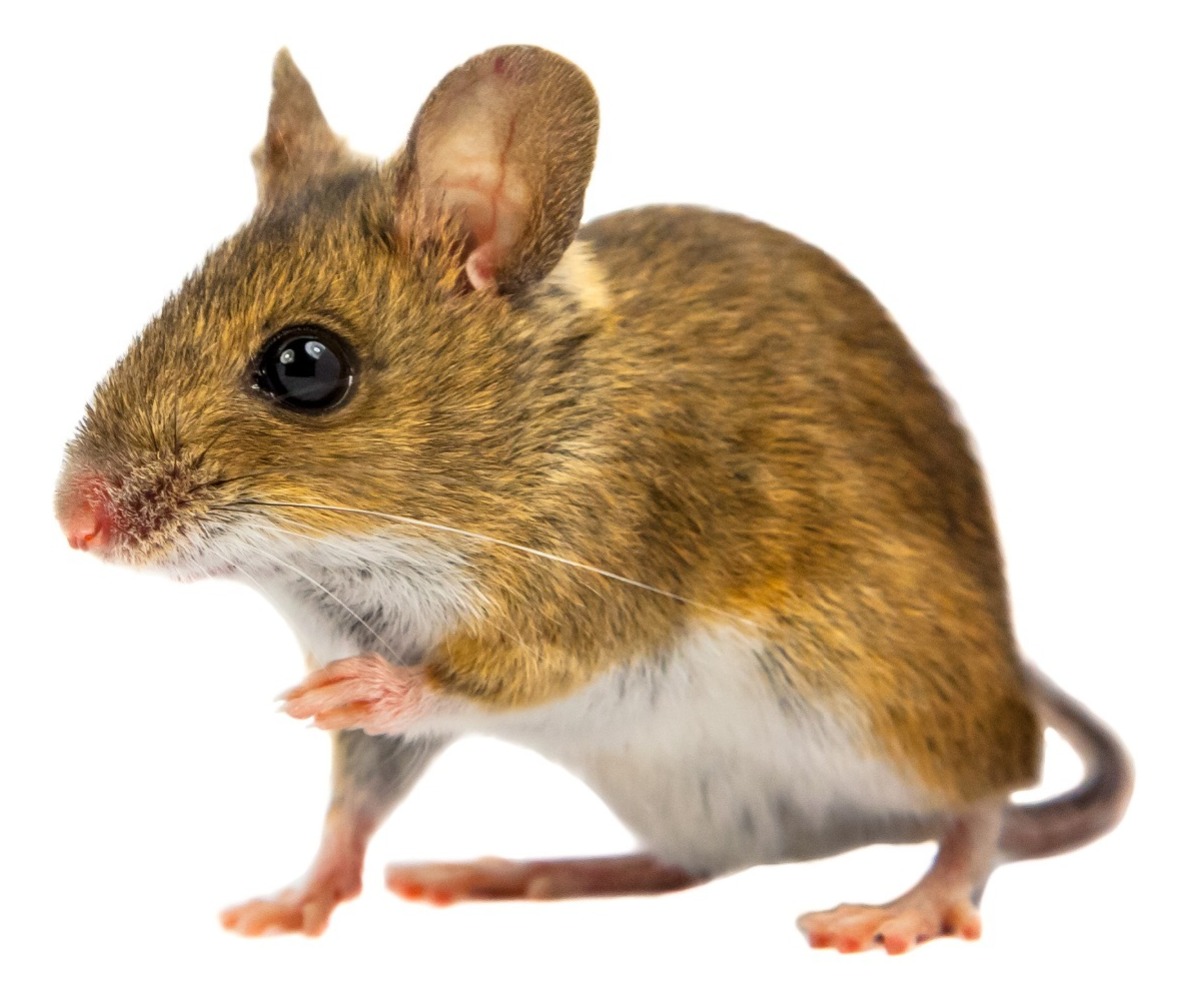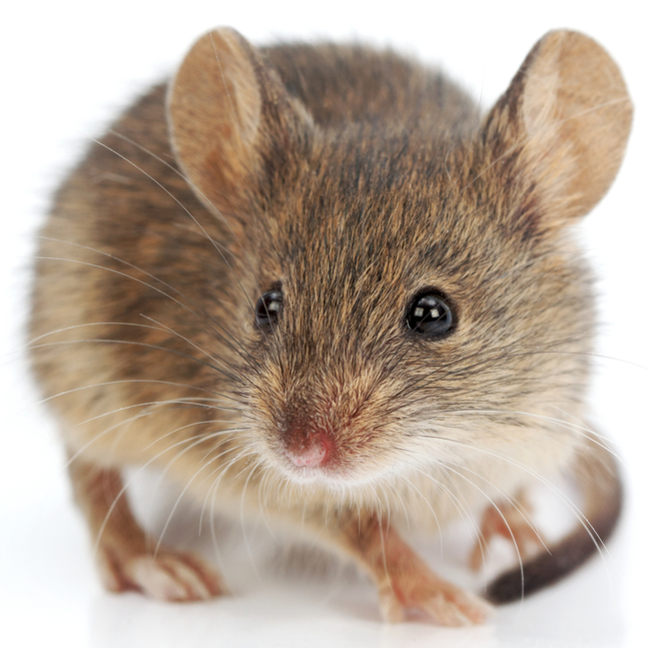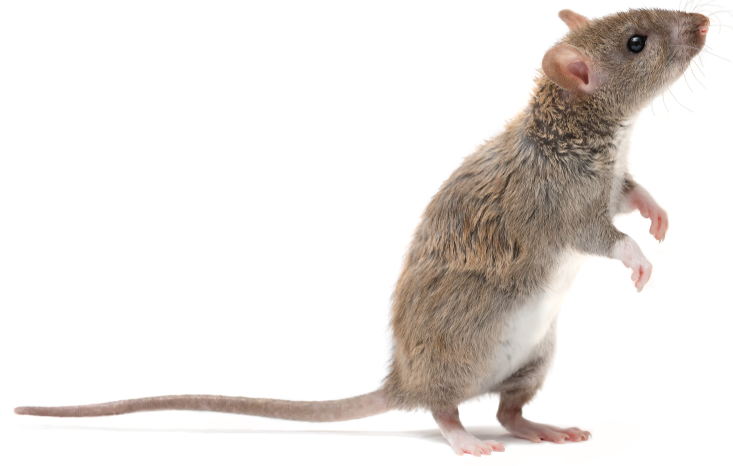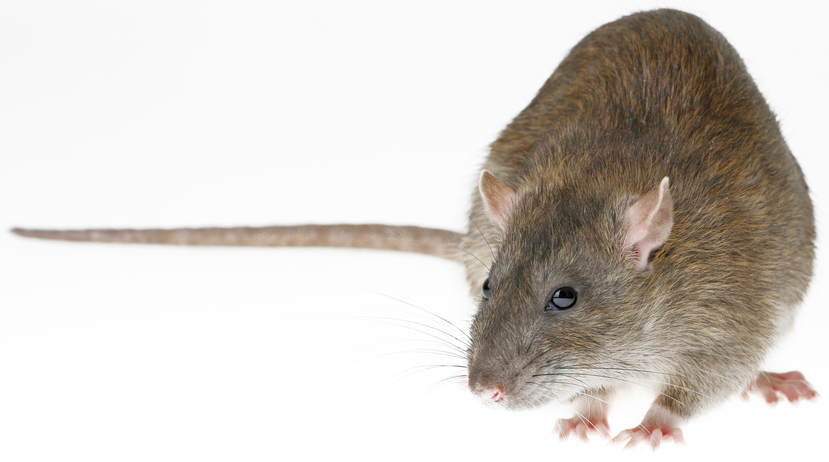Rat or Mouse - that is the question!
Posted on 23rd December 2019 at 16:42
Rats or mice make the bulk of our workload here at All Aspects Pest Control, there seems to be a never ending demand for our services for these two rodent species and unlike the third rodent that we deal with; the squirrel, there is no set season of activity. It used to be the case that rats and mice would start to migrate into homes and businesses across Reading and central Berkshire in the autumn as the weather got wetter and cooler, for the last couple of years we have seen this trend disappear and it seems that they are with us all year round.
Many people do not understand the difference between the two species so we have put together a short guide to tell the difference - rat or mouse, that is the question?
When we get the call for a problem with rats or mice our customers will often tell us that it ran across the kitchen floor and it was dark – that’s all they saw! Nobody wants to have vermin in their house, and this is the Tom and Jerry moment when people start jumping onto chairs or freaking out.
Certainly most people can’t tell the difference between a mouse and a rat and if we did a poll, the consensus would be that they’d be happier with a mouse in the house rather than a rat in the kitchen.
So we’re going to address a few common traits and how to spot the difference between a mouse and a rat.
Firstly, lets look at mice and in broad terms of pest control there two different categories of mice – field mice and house mice. An infestation that consists of field mice, shrews and voles is extremely common and with the exception of a couple of cases a year its what we deal with here as ‘mice’.
Field mice pop up just about everywhere in Reading and the surrounding towns and villages right across Berkshire they number in the thousand's and are very common. Field mice are pests but their what I would call accidental pests – in that they get into our homes and businesses through defects that we left for them to exploit.
Mice can squeeze through a gap the size of your little finger and so an extra large joint weep or a gap beneath a doorframe can be exploited by these animals, we have left the “door” open so you can’t blame them for taking advantage?
Field mice as their name suggests belong outside and are adept at living in that environment, when it gets cold it makes sense for them to seek somewhere safe and warm and who could blame them?

A picture of a typical field mouse - light brown upper with a white belly. All types of field mice will have a long thin tail, large ears and big eyes.
House mice are completely different and these are a serious pest that can infestation larger properties like period conversions or blocks of flats causing havoc; 80% of house mice carry salmonella so they present a health hazard.
Field mice have a short lifespan of around a single year, during this time they will have two to four litters producing a maximum of 24 young; winter is an especially hard time for these animals and they will be heard at night as they are largely nocturnal.
Field Mice: around 10.5 cm in length with a tail that is between 6 and 9 cm, beige to a reddish brown coat with a white belly, smaller eyes and ears than the house mouse. These are excellent jumpers and they will be found on kitchen worktops and in the loft travelling through pipe runs and cavity walls.
The house mouse thrives in buildings eating whatever it get its paws on but they prefer cereals, nuts and seeds, if the mouse has access to foods with enough of a moisture content they do not require a supply of water- this is one major difference between the house mouse and rats.
House mice are prolific breeders and these animals can become a serious problem in larger terraced houses and those types of period houses that have been converted to flats.
Unlike the field mouse, the house mouse does not have a defined breeding season so they can produce up to eight litters a year with higher numbers of young; up to sixteen whereas the field mouse is six.
Early sexual maturity means that within three months the offspring are breeding and producing their own litters.
We don’t have the scale of buildings in Reading like London but there are infestations in the city that have been going on for years despite the efforts of pest control contractors; the house mouse is quickly following in the footsteps or pawsteps of its larger cousin the rat and becoming immune to the rodenticide used in its control.

Larger and more robust than the field mouse with smaller eyes as they are used to living in a brightly lit man made environment.
House Mouse: smaller than the field mouse around 7 to 9.5 cm with a tail of the same proportion to the body, they are often confused with young rats and the positive way to make identification is that they have small feet, large ears and small eyes. Paw size is another indication if you get close enough to see as their feet are smaller than rats, even young rats.
There are many types of shrew out there which like the field mice will find that small fault in the outside of the property and make their way in, the gap beneath garage doors is often the route in as they can climb up stored items inside to access the cavity wall or through drilled holes that once held water pipes.
These are covered in detail in the Woodland Trusts blog – click here to follow the link.
We consider shrews as field mice and our treatment will be the same; all rodenticide bought in the UK by either private customers or professional pest controllers is NOT LICENSED for use on field mice and shrews – these form the staple diet of raptors like barn owls and as the animals liver will contain the active ingredient, poisoning mice is killing owls, kestrels and kites. Our approach with all rodents is to trap and only use poison as a last resort but with field mice we’ll only trap.
We follow the Campaign for Responsible Rodenticide Use – CRRU in that our aim is to reduce the use of poison that is introduced to the environment as this ultimately ends up in the human food chain as well as harming wildlife.
For more information about CRRU please click this link to their website.
So that’s the mouse issue dealt with; two categories of pests the house mouse which is a true pest and can be poisoned and field mice which includes the shrew family and these should not be poisoned off – traps only.
So rats; these can easily be mistaken for mice especially when in the urban environment as juvenile house mice look similar to rats in both size and colour.
Rats are prolific breeders and given access to a warm environment during the winter and a supply of food and water the females will produce litters all year long.
Typically a female will have around six litters a year with a maximum size of twelve in each litter if conditions are optimal; these baby rats quickly grow and they will be sexually mature and producing their own young after 5 or six weeks.
If you do the maths on this it means that a single rat can produce a family dynasty of 2000 in a single year; this figure is used as a scare tactic by some of the larger pest control companies when selling monitoring contracts as half of that number will succumb to disease, predication and of course – people like me.
That still gives us a surviving population of close to a thousand rats, even if we strip the population figures down further, what this shows us is that rats in Reading are increasing at a high enough rate for this to be a cause of concern.
Rats are grey in colour and occasionally a ginger colouring runs through that given the rats a much redder appearance; pet rats with white colouring are genetic mutations and deemed as ‘fancy rats’ – sometimes we’ll see piebald rats and this will be as a result of an escaped rat breeding with the wild population.
There are two species of rats in the UK – the Norway rat and the Black rat; its highly unlikely that you’ll see a black rat in Reading as these are found in dockyards where their habit of climbing and living high up in structures like granaries and warehouses gives them the name roof rat. The rat which resides in Reading and gibes us all the problems is the Norway rat or sewer rat, brown rat and sometimes called the house rat.
The rat has a stocky body with wide powerful back legs, these animals are able climbers and jumpers and can leap almost a metre upwards from a standing start; that’s almost from the floor to the kitchen worktop if you ever wondered how they get up there.
The rat has smaller ears than the house mouse and a thick hairless tail and this is by far the easiest way to identify the two species: thick scaly tail which is shorter than the body length and that’s a rat, a tail with fine hairs on it and that’s a mouse.



Rats as they mature stack on muscle mass and so a skinny juvenile rat can easily be mistaken for a mouse; given the size a young rat can squeeze through sometimes we see these and not the adults.
Rats: generally these will be large animals easily recognised as such; growing up to 23 cm in length and weighing in at over half a kilogram. They have rounded blunt face with small ears and a thick tail that has a scaly appearance and will be shorter than the body length.
If your infestation has gone on for any length of time then you will have fecal deposits or droppings around the house and these will give you another idea especially if you haven’t actually seen the culprit! Mouse droppings are smaller than a dry grain of rice and similar in that they have sharp pointed ends, black in colour these will be found in high numbers scattered about but with more closely deposits where the animals run. Look along edges and especially in corners under kitchen cupboards and under loft insulation; sometimes you’ll see round burrows in insulation as mice will be under this material and tunnel up through it.
Rats tend to run on top of loft insulation so look for creases where the material is compressed, all rodents will leave a pheromone trail which denotes a ‘safe’ route and they will follow this eventually leaving a trail.
Rat droppings are much bigger than a grain of rice about 10 mm in length and these have rounded ends sometimes curved like a banana and these will be found scattered about in a similar way to mice. With rats there is a constant urine stream and this is usually the most noticeable think especially in a confined area like under the floorboards or even the loft.
When it comes to dealing with all types of rodents we recommend that you use a pest control company who will do more than just lay poison in your property as rats and mice carry harmful bacteria and pose a risk to health.
Eradicating the animals is only half of the story as you need to identify the route in and have a plan to resolve the problem for the long term, a straight to poison approach will give you a swift result but it will probably fail to identify the access point; this means that without proofing the rats will be back in time.
Our approach to rat and mouse control in Reading and throughout Berkshire is through investigation, trapping to confirm the correct theory and then proofing to seal up the access point; its more difficult and it takes longer but the overall goal is to keep the animals out for good.
Tagged as: Rats
Share this post:





